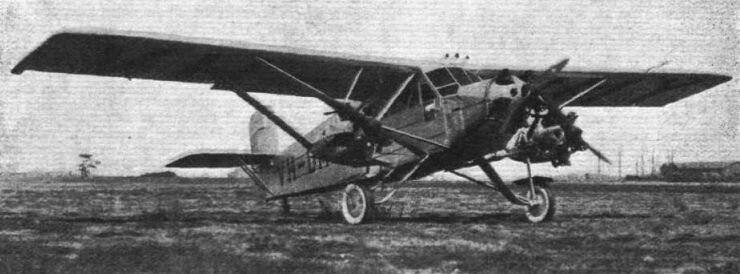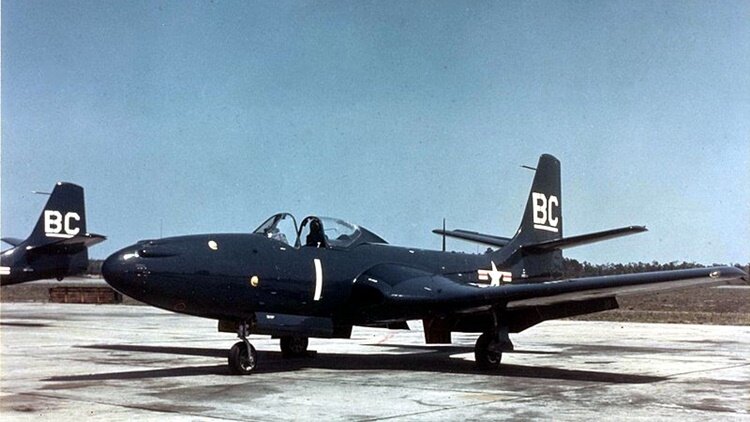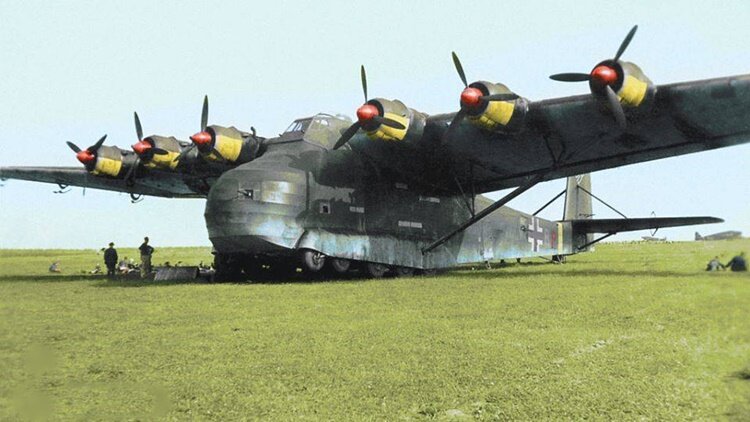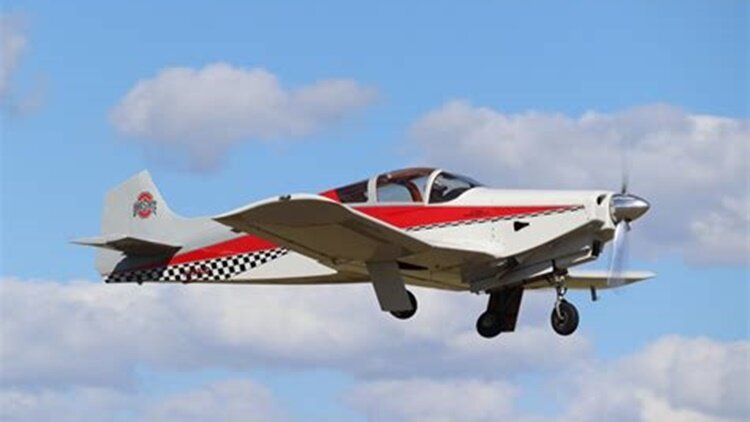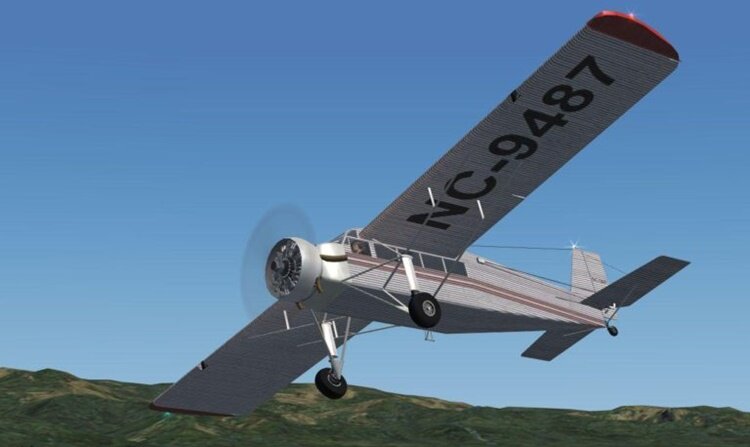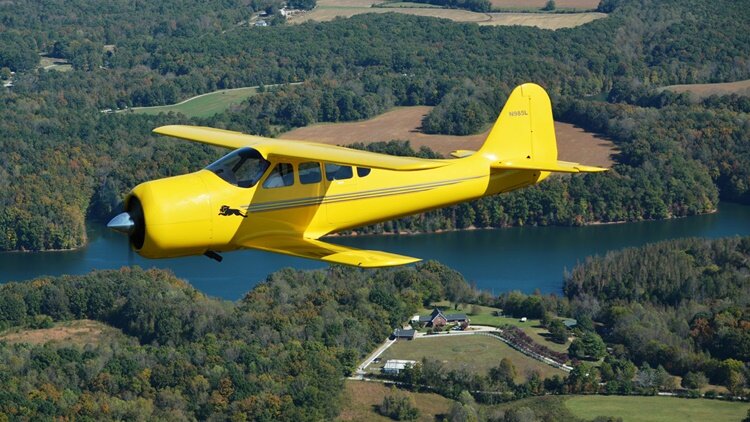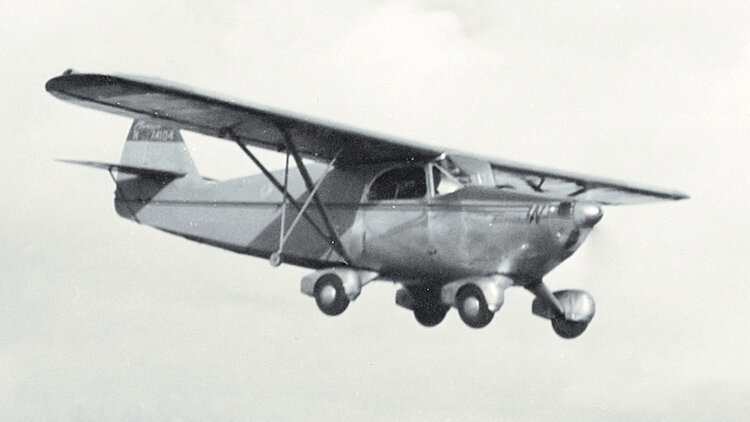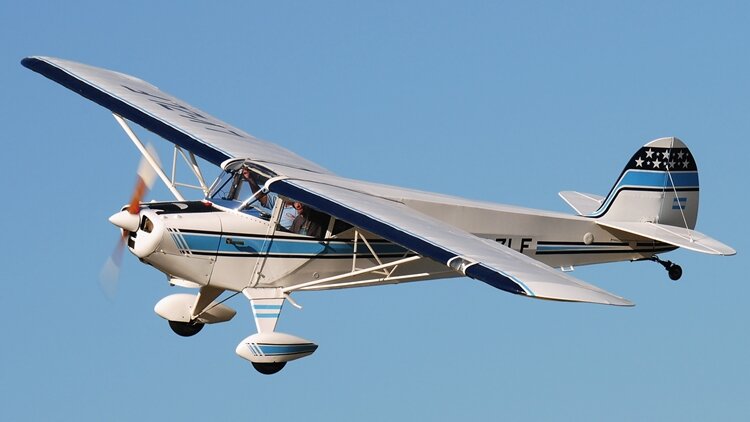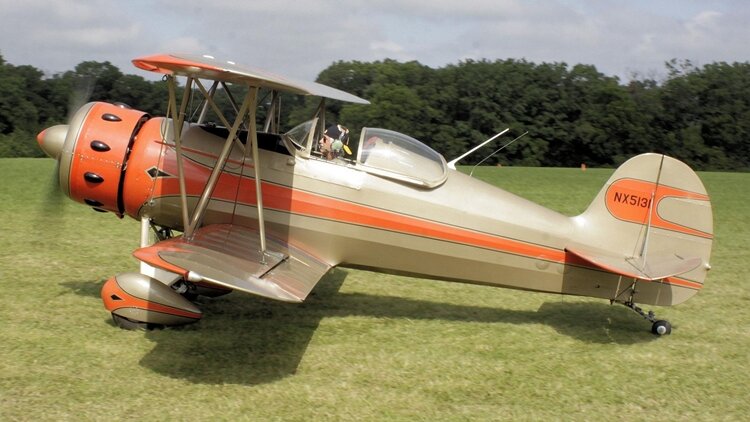Leaderboard
-
in Aircraft
- All areas
- Videos
- Video Comments
- Video Reviews
- Quizzes
- Quiz Comments
- Marker
- Marker Comments
- Books
- Bookshelves Comments
- Bookshelves Reviews
- Bookshelves
- Movies
- Movie Comments
- Movie Reviews
- Aircraft
- Aircraft Comments
- Resources
- Resource Comments
- Tutorials
- Tutorial Comments
- Articles
- Article Comments
- Classifieds
- Classified Comments
- Events
- Event Comments
- Blog Entries
- Blog Comments
- Files
- File Comments
- File Reviews
- Images
- Image Comments
- Albums
- Album Comments
- Topics
- Posts
- Status Updates
- Status Replies
-
Month
-
All time
January 7 2011 - July 16 2025
-
Year
July 16 2024 - July 16 2025
-
Month
June 16 2025 - July 16 2025
-
Week
July 9 2025 - July 16 2025
-
Today
July 16 2025
- Custom Date
-
All time
Popular Content
Showing content with the highest reputation since 16/06/25 in Aircraft
-
The Lasco Lascondor (also frequently known by the misspelling "Lasconder") was a 1930s Australian 8-seat passenger and mail carrier aircraft built by the Larkin Aircraft Supply Company (Lasco) at Coode Island, Victoria. It is claimed to be the first multi-engined aircraft designed and built in the Southern Hemisphere. Development of the Lascondor began in June 1928, concurrently with the company's Lascoter; the two aircraft had 90% commonality of structural parts. Like the Lascoter the Lascondor was a high-wing monoplane with a tubular steel structure, featuring a tailwheel undercarriage and a fully enclosed cabin for the passengers and the pilot. A major change was the Lascondor's three Armstrong Siddeley Mongoose engines instead of the Lascoter's single more powerful Siddeley Puma engine. The Lascondor also had greater fuel capacity and a slightly longer fuselage with a redesigned cabin to accommodate an extra row of seats. In addition, while the Lascoter had two sets of flying controls in the cockpit the Lascondor had only one to allow for another passenger seat, giving an overall capacity of seven passengers and one pilot. The only available photo of the Lascondor.2 points
-
The McDonnell FH Phantom is a twinjet, straight-wing, carrier-based fighter aircraft designed and first flown during late World War II for the United States Navy. As a first-generation jet fighter, the Phantom was the first purely jet-powered aircraft to land on an American aircraft carrier and the first jet deployed by the United States Marine Corps. Although only 62 FH-1s were built it helped prove the viability of carrier-based jet fighters. As McDonnell's first successful fighter, it led to the development of the follow-on F2H Banshee, which was one of the two most important naval jet fighters of the Korean War; combined, the two established McDonnell as an important supplier of navy aircraft. McDonnell chose to bring the name back with the third-generation, Mach 2-capable McDonnell Douglas F-4 Phantom II, the most versatile and widely used Western combat aircraft of the Vietnam War era. The FH Phantom was originally designated the FD Phantom, but this was changed as the aircraft entered production. In early 1943, aviation officials at the United States Navy were impressed with McDonnell's audacious XP-67 Bat project. McDonnell was invited by the navy to cooperate in the development of a shipboard jet fighter, using an engine from the turbojets under development by Westinghouse Electric Corporation. Three prototypes were ordered on 30 August 1943 and the designation XFD-1 was assigned. Under the 1922 United States Navy aircraft designation system, the letter "D" before the dash designated the aircraft's manufacturer. The Douglas Aircraft Company had previously been assigned this letter, but the USN elected to reassign it to McDonnell because Douglas had not provided any fighters for navy service in years. McDonnell engineers evaluated a number of engine combinations, varying from eight 9.5 in (24 cm) diameter engines down to two engines of 19 inches (48 cm) diameter. The final design used the two 19 in (48 cm) engines after it was found to be the lightest and simplest configuration. The engines were buried in the wing root to keep intake and exhaust ducts short, offering greater aerodynamic efficiency than underwing nacelles, and the engines were angled slightly outwards to protect the fuselage from the hot exhaust blast. Placement of the engines in the middle of the airframe, behind the center of gravity, required the cockpit with its bubble-style canopy to be placed ahead of the wing, also granting the pilot excellent visibility in all directions. The long nose allowed designers to use tricycle gear, thereby elevating the engine exhaust path and reducing the risk that the hot blast would damage the aircraft carrier deck. The construction methods and aerodynamic design of the Phantom were fairly conventional for the time; the aircraft had unswept wings, a conventional empennage, and an aluminum monocoque structure with flush riveted aluminum skin. Folding wings were used to reduce the width of the aircraft in storage configuration. Provisions for four .50-caliber (12.7 mm) machine guns were made in the nose, while racks for eight 5 in (130 mm) High Velocity Aircraft Rockets could be fitted under the wings, although these were seldom used in service. Adapting a jet to carrier use was a much greater challenge than producing a land-based fighter because of slower landing and takeoff speeds required on a small carrier deck. The Phantom used split flaps on both the folding and fixed wing sections to enhance low-speed landing performance, but no other high-lift devices were used. Provisions were also made for Rocket Assisted Take Off (RATO) bottles to improve takeoff performance. For more details of development. operational history and variants, click here.1 point
-
The Messerschmitt Me 323 Gigant ("Giant") was a German military transport aircraft of World War II. It was a powered variant of the Me 321 military glider and was the largest land-based transport aircraft to fly during the war. In total, 213 were made, with 15 being converted from the Me 321. The Me 323 was the result of a 1940 German requirement for a large assault glider in preparation for Operation Sea Lion, the projected invasion of Great Britain. The DFS 230 light glider had already proven its worth in the Battle of Fort Eben-Emael in Belgium (the first ever assault by gliderborne troops), and would later be used in the invasion of Crete in 1941. However, in order to mount an invasion across the English Channel, the Germans would need to be able to airlift vehicles and other heavy equipment as part of an initial assault wave. Although Operation Sea Lion was cancelled, the requirement for a heavy air transport capability remained, with the focus shifting to the forthcoming Operation Barbarossa, the invasion of the Soviet Union. Early in 1941, as a result of feedback from Transport Command pilots in Russia, the decision was taken to produce a motorized variant of the Me 321, to be designated Me 323. French Gnome et Rhône GR14N radial engines, rated at 1,180 PS (1,164 hp, 868 kW) for take-off as used in the Bloch MB.175 aircraft were chosen for use. This would reduce the burden on Germany's strained industry. Like the Me 321, the Me 323 had massive, semicantilever, high-mounted wings, which were braced from the fuselage out to the middle of the wing. To reduce weight and save aluminium, much of the wing was made of plywood and fabric, while the fuselage was of metal-tube construction with wooden spars and covered with doped fabric, with heavy bracing in the floor to support the payload. The "D" series had a crew of five - two pilots, two flight engineers, and a radio operator. Two gunners could also be carried. The flight engineers occupied two small cabins, one in each wing between the inboard and centre engines. The engineers were intended to monitor engine synchronisation and allow the pilot to fly without worrying about engine status, although the pilot could override the engineers' decisions on engine and propeller control. For more details of development, design, operational history and 18 variants, click here.1 point
-
The Jeffair Barracuda is a high-performance sporting monoplane that was developed in the United States in the 1970s and is marketed for homebuilding. Designed and built by Geoffrey Siers, the prototype won the prize for "Most Outstanding New Design" at the EAA Fly-in in 1976. It was a low-wing cantilever monoplane of wooden construction with retractable tricycle undercarriage and side-by-side seating for two. Around 150 sets of plans had sold by 1977. Geoffrey Siers was a former RAF pilot and engineer for Boeing in 1967. He set out to design an aircraft that was fast, aerobatic, two place, and had range to fly long cross-country flights. The aircraft was refined after a full size cockpit mockup was made. The lightweight construction of the plywood-covered wooden de Havilland Mosquito was the inspiration for the materials choice. The retractable landing gear came from a Piper PA-24 Comanche. The wings were a three-piece design. Test flights were performed in 1975. The aircraft takes off at 70 mph (113 km/h) and climbs at 2000 feet per minute (10.2 m/s). Full flap stalls were recorded as low as 54 mph (87 km/h).1 point
-
The Metal Aircraft Flamingo was a monoplane produced in Cincinnati, Ohio by the Metal Aircraft Corporation in the 1930s. The Metal Aircraft Corporation purchased the design from the Halpin Development Co. and unveiled it at the 1929 National Air Races with Elinor Smith. Following an accident at Bowman Field in May 1928, the prototype Flamingo was redesigned with a different nose, windscreen, and tail. The interior was insulated with Balsam-Wool Blanket. The Flamingo was first flown from Lunken Airport on 8 April 1928 by Thomas E. Halpin. At one point, the aircraft carried an African-American porter in a red suit named Benny Smith. Following a teaser, marketing for the new airplane began in March 1929 and dealers were being solicited by the following month. One G-2-W, named El Rio Caroní, is best remembered for its role in the discovery of Angel Falls by Jimmy Angel in 1935. Although well known to the local indigenous population, the falls had been glimpsed only by European explorers until Jimmy Angel crash-landed while attempting to land above the falls on Auyán-tepui during gold exploration. The Metal Aircraft Corporation Flamingo that crashed above the falls was recovered by helicopter in the 1960s by the Venezuelan government and is on display at the entrance of the Ciudad Bolívar airport, in Venezuela. A replica was put in its place for visitors of the crash site. Other operators included the Mason & Dixon airline. Another operator of the aircraft was United States Airways which flew a route from Denver to Kansas City in the early 1930s. Stops were made Goodland, Salina, and Topeka, Kansas. Number built 21 Variants Halpin Flamingo six-passenger 410hp P&W G-1 five-passenger 450hp P&W G-2 six-passenger G-2-H six-passenger 525hp P&W G-2-W (Specifications below) eight-passenger 410hp P&W G-MT-6 five-passenger 410 or 525 P&W1 point
-
The Kalinin K-5 was an airliner produced in the Soviet Union in the 1930s, built in larger quantities than any other Soviet airliner of its time, with some 260 aircraft constructed. It was a conventional, high-wing, strut-braced monoplane with a fully enclosed cabin and cockpit, and followed the general pattern developed by Kalinin in his earlier designs, though on a larger scale. Kalinin had first considered an airliner for 10-12 passengers as early as 1926, but it was not until Ukrvozdukhput expressed interest in such a machine late the following year that work on the design began in earnest. The prototype was ready by mid-autumn 1929, and first flew on October 18 with Mikhail Artemevich Snegirev at the controls. Safety trials for the State Commission commenced on 30 May 1930, and were passed successfully. Ongoing problems with the aircraft's Gnome et Rhône-built Bristol Jupiter engine resulted in the second prototype being powered by a Pratt & Whitney Hornet instead. This machine undertook further testing and a number of promotional flights before series production of the K-5 commenced. Early production examples were used on trial services between Kharkiv and Moscow, Mineralnye Vody, and Baku. Problems with the Bessonov M-15 engines became quickly apparent, with frequent failures and operational lifespans measured in only dozens of hours. K-5 operations were suspended by the Inspectorate of Civil Aviation until the issues were resolved. Kalinin turned to the Shvetsov M-22 as an alternative powerplant. While reliability increased, this engine installation also created more drag than the M-15 had, and performance decreased accordingly. State Acceptance trials carried out in May–June 1932 confirmed the reliability of the engine with 550 takeoffs and landings and 2,000 steep turns, but found that the payload capacity was now unacceptably low. By this time, however, the M-15 had become reliable enough for restrictions to be lifted and K-5 production resumed, and eventually about 100 K-5s were fitted with this engine. The reliability of the revised M-15 design was vindicated by a gruelling flight through the Caucasus on 25 June 1933. Eventually, the Mikulin M-17F provided the definitive powerplant for the K-5, offering an increase in power and performance over the M-15, but decreasing the aircraft's payload and range due to its greater weight. The new engine also required strengthening of the wing design; the first K-5 fitted with this engine suffered structural damage during flight tests due to the increase in engine power. The K-5 was widely used by Aeroflot, displacing German-built Junkers F 13s and Dornier Komets in regular service. The first scheduled route flown by K-5s was Moscow-Kharkov, followed by services between Moscow and Sverdlovsk, Tashkent, and Arkhangelsk. They remained in service until 1940, becoming the backbone of Aeroflot's domestic operations. The K-5 was also used by the Soviet Air Force as a transport aircraft, operating in this capacity until 1943.1 point
-
The Isaacs Spitfire is a single seat homebuilt sporting aircraft design created by John O. Isaacs, a former Supermarine employee and retired schoolmaster and designer of the Isaacs Fury, as a 6/10th scale replica of a Supermarine Spitfire. Its first flight was on 5 May 1975. As per the original Spitfire, the Isaacs Spitfire was a cantilever low-wing monoplane of semi-elliptical planform. The twin spar wing was built in one piece, mainly of spruce with birch plywood skin. The fuselage was of identical construction. The landing gear is fixed and included a tailwheel. Plans are available for sale to home constructors.1 point
-
The Griffon Lionheart is an American single-engined, six-seat biplane designed and produced in kit form for home building by Griffon Aerospace of Harvest, Alabama. The Lionheart is based on the Beechcraft Staggerwing biplane of the 1930s but unlike the steel tube, wood and fabric construction of the Staggerwing it has a composite structure. The Staggerwing has strut-braced wings but the Lionheart has cantilever wings with a total area about 20% less than the wings of the Staggerwing. It is powered by a 450 hp (336 kW) Pratt & Whitney R-985 Wasp Junior radial engine with a three-bladed propeller. It has a retractable conventional landing gear with a tailwheel. The enclosed cabin is slightly longer than the Staggerwing's cabin to allow room for the pilot and five passengers, and it has a split airstair access door on the port side. The Lionheart first flew on 27 July 1997 and was first displayed in public at EAA AirVenture Oshkosh a few days later. Five kits were sold by April 1998, and two of the kits were completed by 2001, with another almost complete. As of August 2011, three Lionhearts are registered in the United States, with another example on display in an aviation museum at Tullahoma Regional Airport in Tullahoma, Tennessee. Kits are no longer being produced.1 point
-
The Fulton FA-2 Airphibian is an American roadable aircraft manufactured in 1946. Designed by Robert Edison Fulton Jr., it was an aluminum-bodied car, built with independent suspension, aircraft-sized wheels, and a six-cylinder 165 hp engine. The fabric wings were easily attached to the fuselage, converting the car into a plane. Four prototypes were built. In December 1950, the Civil Aeronautics Administration (CAA) (later to become the FAA) certified one of the prototypes and gave it an 1A11 Aircraft Specification, N74104. Lou Achitoff, was the CAA test pilot. The N74154 is the aircraft that is today in the main building of the National Air and Space Museum in Washington, DC, having previously been on display in the Steven F. Udvar-Hazy Center. The craft made its debut in November 1946 at Danbury, Connecticut. Financial concerns forced Fulton to sell to a company that never developed it. Only four aircraft had been completed. The Airphibian took the approach of converting from an aircraft to a roadable vehicle by a conversion process that left aircraft sections behind during road use. The process consisted of removing a three-bladed propeller and placing it on a hook on the side of the fuselage, cranking down support casters, and disengaging lock levers connecting the flight unit to the road unit. The wing and aft fuselage are detached for road use. In the mid-1990s, one of the surviving Airphibians was restored by Fulton III, along with David Dumas and Deborah Hanson. Later, it was put on display for several years at the Canada Aviation Museum in Ottawa, Ontario, Canada in their main display hall, but in 2009 it moved to the Steven F. Udvar-Hazy Center (annex of the National Air and Space Museum).[6] Since 2022 it has been on display in the National Air and Space Museum in Washington, DC.1 point
-
The FMA 20 El Boyero ("Shepherd") was a light utility aircraft produced in Argentina in the 1940s. It was a conventional high-wing strut-braced monoplane with a fixed tailskid undercarriage, seating two side by side in an enclosed cabin. The Fábrica Argentina de Aviones (FMA) began design work on the El Boyero in 1939, to meet the needs of Argentine flying clubs for a training aircraft. Two prototypes were built, with the first, powered by a 50 hp (37 kW) Continental A50 flat four engine, flying on 2 November 1940, and the second early the following year. The El Boyero was a single-engine tractor high-wing monoplane, with a fixed tailwheel undercarriage. Its fuselage had a steel tube structure with fabric covering, while the aircraft's wing, which was braced to the fuselage with steel tube struts, had spars of spruce, with ribs of aluminium alloy. Pilot and instructor sat side-by-side in an enclosed cabin, and were provided with dual controls. As FMA was busy building military aircraft production rights were sold to the private firm Sfreddo y Paolini [es] but they were unable to start production due to a shortage of materials and equipment as a result of the Second World War. After the end of the war, production rights were re-assigned to Petrolini Hermanos. This company received an order for 160 aircraft from the Argentine government, and commenced deliveries in January 1949. The aircraft, powered by 65 hp (48 kW) Continental A65-8 or 75 hp (56 kW) Continental A-75 engines, were distributed to Argentina's aeroclubs and to the military, which used it as a spotter and liaison aircraft. Petrolini experienced great difficulties sourcing sufficient materials to complete the order, and in 1951 ceased production, having completed 130 aircraft.1 point
-
The Davenport BD-2 Nuggit (sic) is an American biplane developed for homebuilt construction. The B-2 Nuggit is a single place biplane with conventional landing gear. The cockpit is covered with a sliding bubble canopy. The fuselage is welded steel construction with aircraft fabric covering. A round cowling covers the engine to appear like a radial engine installation. The wing uses a wooden spar with aluminum wing ribs.1 point


